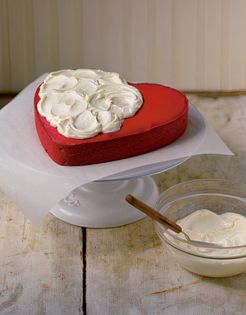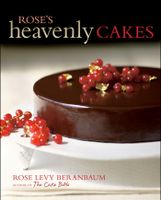Advertisement

Preparation info
- Serves:
8 to 10
- Difficulty
Medium
- Ready in
25 min
Appears in
Published 2009
I long resisted the charms of this cake, believing it to be merely a layer cake tinted red with a bottle of food coloring. But when several people on my blog sang its praises, I decided to investigate it more thoroughly. It turns out that there is more to this cake than its shocking color. This beloved southern cake is traditionally prepared with oil, a mere suspicion of cocoa, and a teaspoon of white vinegar, which raises the acidity of the batter and intensifies its color. The liquid comp


